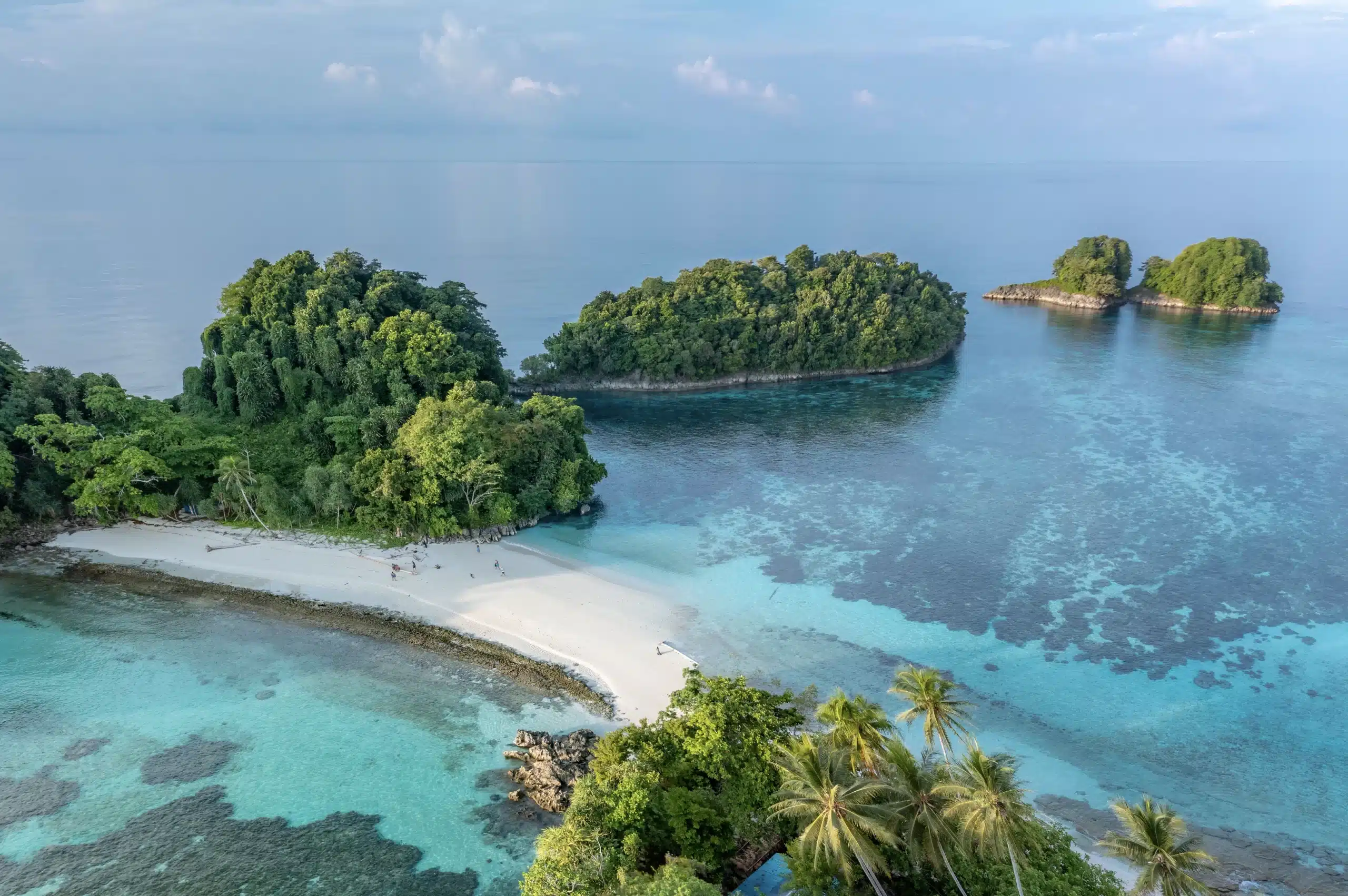CHENDERAWASIH BAY
Next Available: 1 – 11 September
Cenderawasih Bay Diving: A Haven for Whale Sharks and WWII Wrecks
Prepare to discover the wonders of Cenderawasih Bay, a hidden treasure in West Papua that offers a unique blend of marine encounters and historical diving. This secluded paradise is waiting to captivate you with its gentle giants and underwater relics. Check our Itineraries for more info!
🌟 Limited Promotion: 10% Discounted Trips for August and September 🌟
Encounter Majestic Whale Sharks
Cenderawasih Bay is one of the few places on Earth where close diving encounters with whale sharks are almost guaranteed. These magnificent creatures are frequent visitors to local fishing platforms, creating unparalleled opportunities for divers and snorkelers. Swimming alongside these gentle giants is an experience that will stay with you long after you’ve dried off. Learn more about diving with whale sharks.
Explore Underwater History
History enthusiasts, take note! Manokwari Bay is a veritable underwater museum of World War II relics. The bay is dotted with well-preserved shipwrecks, each telling its own story of the past. These wrecks have transformed into vibrant artificial reefs, offering a unique fusion of historical exploration and marine biodiversity. In 2022 the area was declared a protected marine reserve of 1.5 million hectares, the largest natural park in Southeast Asia. Explore WWII shipwreck diving.
Dive Highlights
Cenderawasih Bay is one of the only places in the world where it’s possible to see such large numbers of Whale sharks so easily. Divers and snorkelers are treated to a unique experience as the sharks’ circle floating fishing platforms (Bagans) that target small baitfish and squid.
The Whale Sharks are regular visitors to the Bagans and are hand-fed by the local fisherman who believes the whale sharks bring good luck. Interacting with Cenderawasih’s resident giants is truly a lifetime experience.
As we prefaced above, they are giant pelagic animals that can grow up to 20 meters in length. Despite their large size, they are effectively harmless to humans because they are filter feeders – animals that feed strictly on plankton, krill, larvae, eggs and small crustaceans.
Those who are not afraid of their large size can even swim up close to their mouth to observe the rows of teeth that filter the food from the water.
Another highlight in the area is Manokwari Bay, which provided a safe anchorage for the Japanese during the second world war. Numerous wrecks are scattered around the bay.
Several wrecks are currently accessible to reactional dives, with many still to be discovered. The wrecks are covered in corals and home to a large variety of sea life. Some of the boats are still remarkably preserved, and you can still see ammunition, helmets, and cargo. Underwater exploration has only just begun, and we expect more surprises to emerge from these extraordinary seas.
Cenderawasih Bay Hightlights:
- Diving with Whale Sharks
- Well preserved WW2 shipwrecks and plane wrecks
- Superb wall diving
- Visit to local villages
- Deserted white sand beaches
- Kayaking and Stand up Paddle Boarding
- Beach BBQ
- Total of 30+ dives
Cenderwasih Bay Dive Zones:
- Numfor
- Num
- Rumberpon
- Mios Waor
- Roon
- Tanjung Ayami
- Tanjung Manguwar
- Kwatisore
- Ahe
- Water Temperature: A comfortable 27-29°C year-round.
- Recommended Wetsuit: 3mm or 5mm.
- Maximum Depth: 35 meters (100 feet).
- Currents: Generally mild due to the enclosed nature of the bay.
- Visibility: Typically up to 20 meters, though it can vary.
🌟 Limited Promotion: 10% Discounted Trips for August and September 🌟

ITINERARY
Take advantage of our special promotion: Book your Cenderawasih Bay diving trip for August or September and enjoy a 10% discount on all liveaboard packages. We’ll also assist with organizing your domestic flights for a seamless travel experience. Book your discounted trip.
Travel Information
Access Cenderawasih Bay via the main airports in Manokwari or Nabire. Direct flights are available from Jakarta and Bali, typically with one or two layovers. Our team is here to help coordinate your domestic travel arrangements, ensuring a smooth journey to your underwater adventure. Plan your trip.
Optimal Visiting Period
The best time to visit Cenderawasih Bay is from July to October. During this period, we focus on more sheltered routes in Cenderawasih due to calmer sea conditions, while other areas of West Papua may experience rougher seas.
Ready to Embark on Your Cenderawasih Bay Diving Adventure?
Contact Calico Jack Charters today to book your journey to this extraordinary destination. Whether you’re drawn by the allure of whale sharks, the intrigue of historical wrecks, or the beauty of untouched coral reefs, Cenderawasih Bay offers an underwater experience like no other. Learn more about our Indonesian liveaboard charters.
P.S. Stay informed about our special offers and upcoming expeditions. Sign up for our newsletter – your direct line to extraordinary underwater experiences!

How to get to Cenderawasih Bay
You can enter Chenderawasih Bay by one of the main airports in Manokwari or Nabire.
Flights are available from Jakarta and Bali. Get ready for 1 or 2 overlays.

Weather – Cenderawasih Bay Diving
The best time to visit Cenderawasih Bay is from July to October. The famous whale sharks are present in the bay throughout the year.
The Papua provinces of Indonesia experience 2 wet seasons: – November/December and July/August, however, it might rain in Papua at any time.

Cenderawasih Bay Diving Info
TEMPERATURE – The sea water temperature is averaging around 27-29°C throughout the yea
WETSUIT – 3 or 5mm
DIVING DEPTH – Max 35 m (100 Feet)
CURRENT – As Chenderawasih bay is an enclosed area, currents are very rare here
VISIBILITY – Visibility in Chenderawasih Bay might vary. Rarely exceeding 20 meters, it can lower to less than 10 meters, especially after a lot of rain in the Bay.

